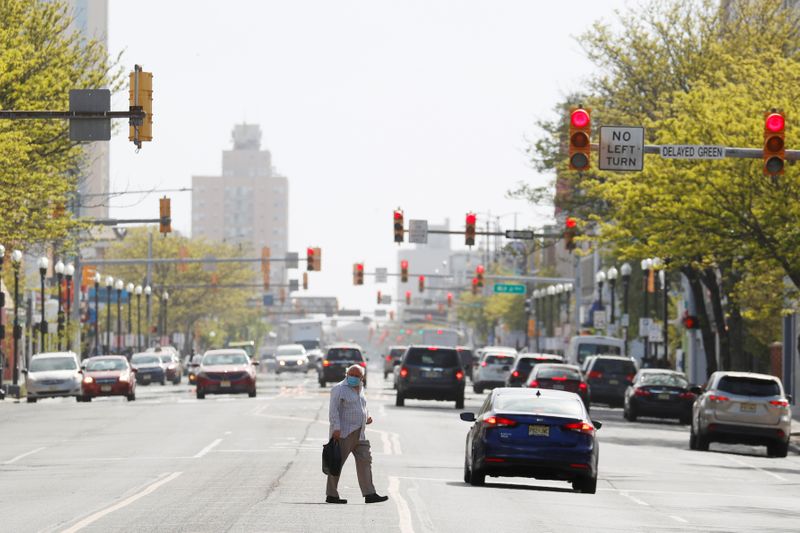(Reuters) – Policymakers, economists and investors are turning increasingly to so-called high-frequency data to get a more timely snapshot of the U.S. economy during the fast-moving coronavirus pandemic than traditional monthly and quarterly indicators can provide.
These run the gamut from long-established government reports such as the Labor Department’s weekly unemployment benefits figures – which in the latest week shot back above 1 million new claims – to new privately sourced analyses of retail foot traffic from mobile phone tracking data and shifts worked at small businesses derived from payroll service providers.
Here are some of the sources:
* The U.S. Department of Labor’s Weekly Jobless Claims https://oui.doleta.gov/unemploy/claims.asp report, published every Thursday morning, has long been viewed as the most timely official data on the state of U.S. employment.
* Alternative views on what’s happening with employment are available from time management firms Homebase https://joinhomebase.com/data and Kronos https://www.kronos.com/about-us/newsroom/update-us-workforce-activity, which shed light on information such as the number of workers on the job and numbers of shifts worked.
* JobsEQ by Chmura http://www.chmuraecon.com/blog aggregates new job listings posted each week by companies and on job websites, considered an advance indicator of future job growth.
* Mobility reports from Alphabet Inc’s <GOOGL.O> Google https://www.google.com/covid19/mobility and Apple https://www.apple.com/covid19/mobility Inc <AAPL.O> show how much people are moving around in different communities as lockdowns ease or are reimposed.
* Data analytics firms Unacast https://www.unacast.com/covid19/covid-19-retail-impact-scoreboard and Safegraph https://www.safegraph.com/dashboard/covid19-commerce-patterns offer even more granular information on foot traffic at retailers and other commercial destinations.
* Online restaurant reservation site Opentable https://www.opentable.com/state-of-industry tracks daily counts of seated diners and compares that to year-ago levels, a series many economists have followed to gauge activity in one of the hardest-hit industries.
* For keeping track of trends on travel, which has been hit particularly hard by the pandemic, the Transportation Security Administration (TSA) provides Checkpoint travel numbers https://www.tsa.gov/coronavirus/passenger-throughput.
* A number of the 12 regional banks in the Federal Reserve system have devised activity indexes of their own. The New York Fed, for instance, uses 10 different data series ranging from weekly jobless claims to steel production to produce its own Weekly Economic Index https://www.newyorkfed.org/research/policy/weekly-economic-index#.
* Opportunity Insights’ Economic Tracker https://www.tracktherecovery.org, with support from the Bill and Melinda Gates Foundation and Brown University, combines anonymized data from private companies, including credit card processors and payroll firms, to provide a real-time picture of employment rates, consumer spending, and job postings across counties, industries, and income groups.
* A number of investment and economic research firms have formulated their own activity indexes. The Oxford Economics Recovery Tracker http://blog.oxfordeconomics.com/topic/recovery-tracker, for example, takes into account financial conditions and health metrics as well as indicators of employment and demand.
* For insight on the spread of COVID-19 itself, Johns Hopkins University’s Tracking Project https://coronavirus.jhu.edu/us-map keeps tabs on daily U.S. county-level data on testing, population, infection rate, and hospital capacity.
* And the Department of Health and Human Services (HHS) Protect Public Data Hub https://protect-public.hhs.gov provides COVID-19 information from non-government datasets collected by academia, non-profit organizations, industry, hospitals, and facilities reporting from all 50 states and territories.
(Reporting by John McCrank; Additional reporting by Howard Schneider; Editing by Andrea Ricci)



















